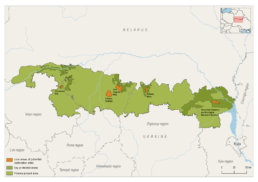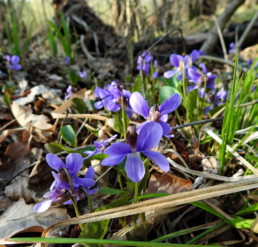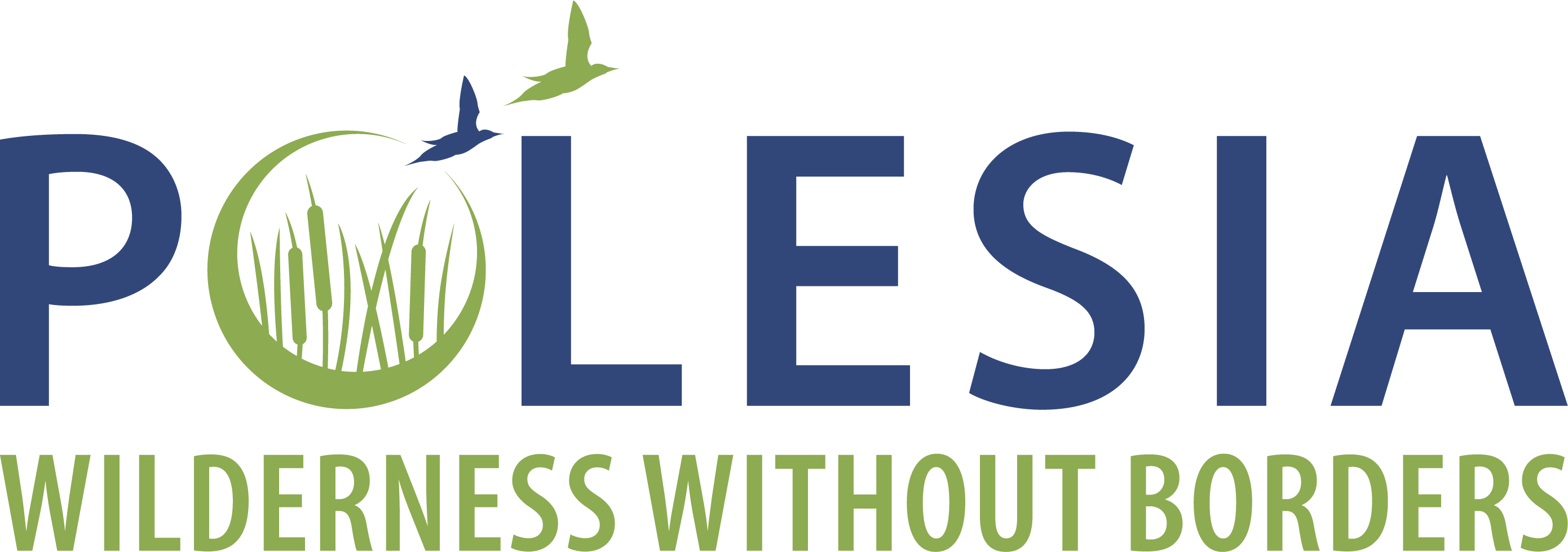Starobinsky Nature Reserve
The Starobinsky Local Nature Reserve was designated with the participation of our project specialists. This area is located in the north part of the Pripyat Polesia. This natural complex is confined to the floodplain biotopes of the Sluch River below the Soligorsk water reservoir near the south-eastern outskirts of the town of Starobin.
Encompassing a number of valuable habitats, the nature reserve supports a great biodiversity with a high concentration of protected species of flora and fauna. For instance, the reserve hosts the most of the habitats of the protected Swamp Violet (Viola uliginosa) in Belarus. Nesting greater spotted eagles have been also registered there.

Country: Belarus
Area: 5,300.0 ha
National protection status: Nature Reserve
Biodiversity and natural values

Flora
The flora of the area is quite specific. Rare and protected biotopes represented by spruce forests, oak forests and black alder forests have been identified in the reserve. There were also found 70 places of growth of six species of vascular plants, mosses and fungi included in the main list of the Red Book of Belarus, as well as seven plant species from the additional list of species in need of preventive protection.
The Swamp Violet (Viola uliginosa) prevails among the protected plants. Most of the places where this violet grows in Belarus are located in the territory of the reserve, which, of course, increases its natural significance. Also recorded here are the Mountain Arnica (Arnica montana), the Feathery Neckera (Neckera pennata), the Meadow Gladiolus (Gladiolus imbricatus) and other rare plant species.



Fauna
There are 36 animal species of various groups listed in the Red Book of Belarus recorded in the reserve. The vast marshy meadow ecosystems of the Sluch floodplain have also become the habitat of many protected bird species. There one can meet corncrakes, sandpipers, great snipes, grey cranes here. Birds of prey also find shelter and food here: the Bearded Owl (Strix nebulosa), the Greater Spotted Eagle (Aquila clanga) and others. The part of the floodplain in its natural state is a habitat for waterfowl. Floodplain forests are inhabited by the Black Stork (Ciconia nigra), which nests in centuries-old trees.
In addition to birds, several protected species from other wildlife groups have been found in the territory of the reserve: the European Pond Turtle (Emys orbicularis), the Crested Newt (Triturus cristatus), the Hazel Dormouse (Muscardinus avellanarius) and the Badger (Meles meles). The Lynx has also settled here, which is rare for this region.
The most important impacts and threats

Logging, dead wood removal

Artificial afforestation

Renewal and construction of drainage systems
Protection and conservation needs
Forest use is largely restricted within the reserve’s territory. In particular, main use felling is prohibited, and all types of felling (except for sanitary felling) are prohibited on part of the territory. A significant part of the species’ habitats have been transferred to land users for protection.
The following measures are recommended to make the conservation efforts more efficient:
- Develop a territory management plan;
- Elaborate and implement a system of montoring of natural values for the area.
Our activities in the area
The project staff participated in the preparation of the documents required for the designation of the reserve. They also initiated the preparation of a management plan for the reserve.



The project “Polesia – Wilderness Without Borders” is part of the Endangered Landscapes & Seascapes Programme and is funded by Arcadia. The project is coordinated by Frankfurt Zoological Society (FZS).

